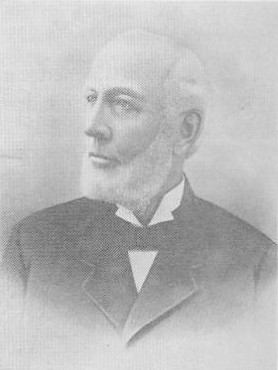J.I. Case Texas Roots
 The forebearers of the Case Family came from England to settle in Massachusetts Bay Colony prior to moving to Oswego County, New York State. It was there in 1819 that Jerome Increase Case was born to Caleb and Deborah (Jackson) Case, she being of the same stock that produced Andrew Jackson.
The forebearers of the Case Family came from England to settle in Massachusetts Bay Colony prior to moving to Oswego County, New York State. It was there in 1819 that Jerome Increase Case was born to Caleb and Deborah (Jackson) Case, she being of the same stock that produced Andrew Jackson.
In his youth J. I. Case did custom threshing with a "Ground Hog Thresher" capable of threshing 150 to 200 bushels of wheat a day. In 1842, at 23 years of age, he went by ship via the Welland Canal to Chicago with six Ground Hog Threshers purchased on credit. In Chicago he purchased a wagon and team and headed north to Rochester, Wisconsin. Along the way he sold five of the six threshers. His plan was to spend the winter in Rochester improving the remaining ground hog thresher. The rest of the story is of course legend like so many great success stories in American History. Jerome I. Case went on to develop and improve the threshing machine, and became the threshing machine king. He established the J.I. Case Threshing Machine Co. and the J.I. Case Plow Works operates in Racine, Wisconsin where he founded the company under the name of J.I. Case Company. Recent mergers brought on Case-IH.
At his Hickory Grove farm near Racine, J. I. Case developed a strong interest in his stable of racing horses. Most noteworthy of his horses was Jay-Eye-See, a black gelding for which he paid only $500.00, but who went on to establish a new trotting record of a mile in 2:10, easing out William H. Vanderbilt's celebrated Maude S. After rupturing a ligament, Jay-Eye-See was retired to Hickory Grove Farm, but eight years later trained to pace by Case's son, Jackson. Jay-Eye-See went on to set a pacing record of a mile in 2:06 1/4 which established him as the world's all time champion double gaited performer, a record which stood for over sixty years.
A partnership with his friend, Eli Stilson of Fond du Lac, Wisconsin, inventor of the wrench which bears his name, brought about the introduction of the name 'Case' to Southwest Texas. The two men, during the early 1880's, went to Texas, bought range land and there operated a rather large cattle operation under the name of Stilson & Case. Their stock pens occupied the present site of the city of Mertzon, Texas. Shortly thereafter, Case independently purchased 60,000 acres of this land when the Texas railroads were authorized to sell large tracts of land.
